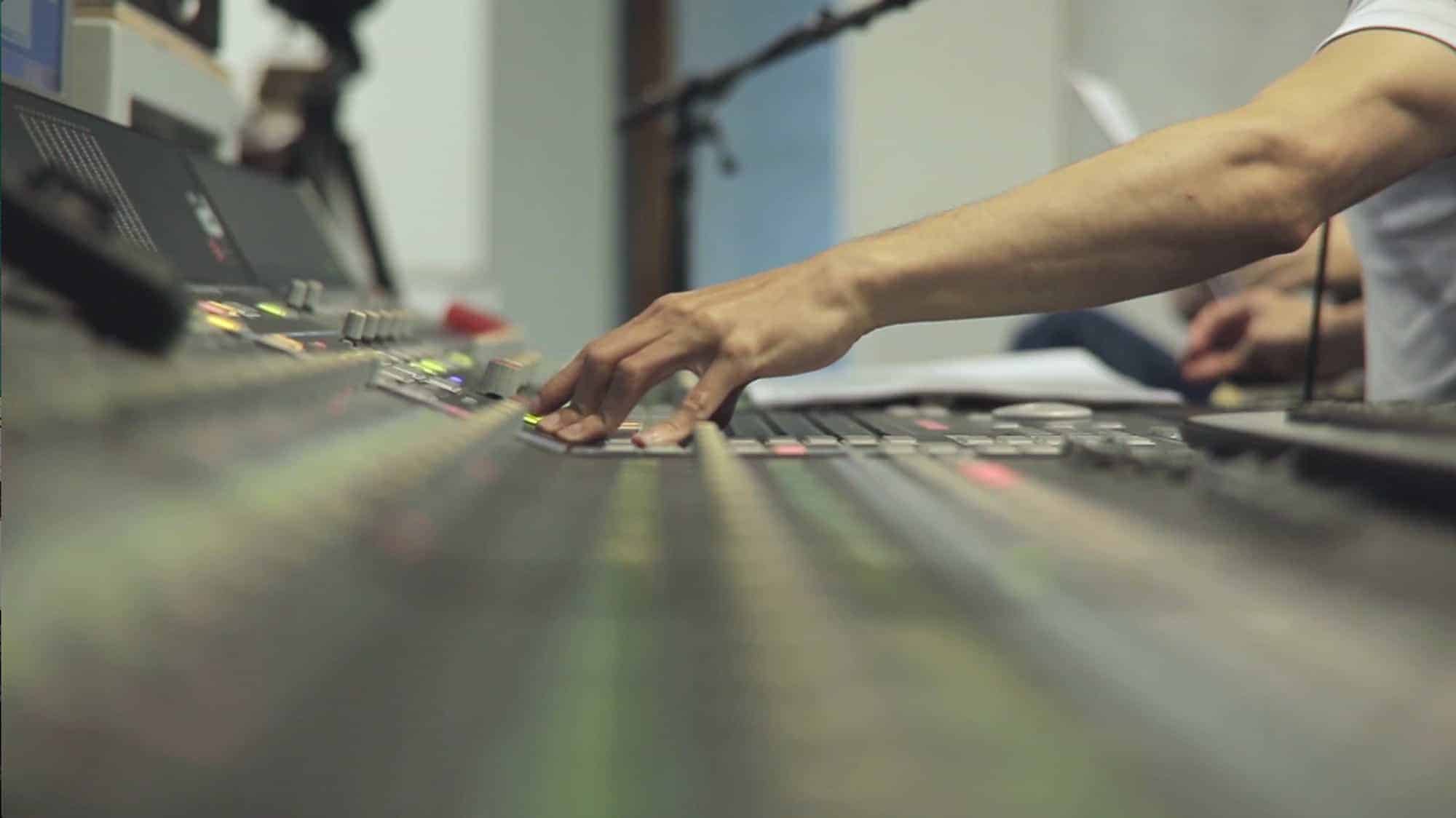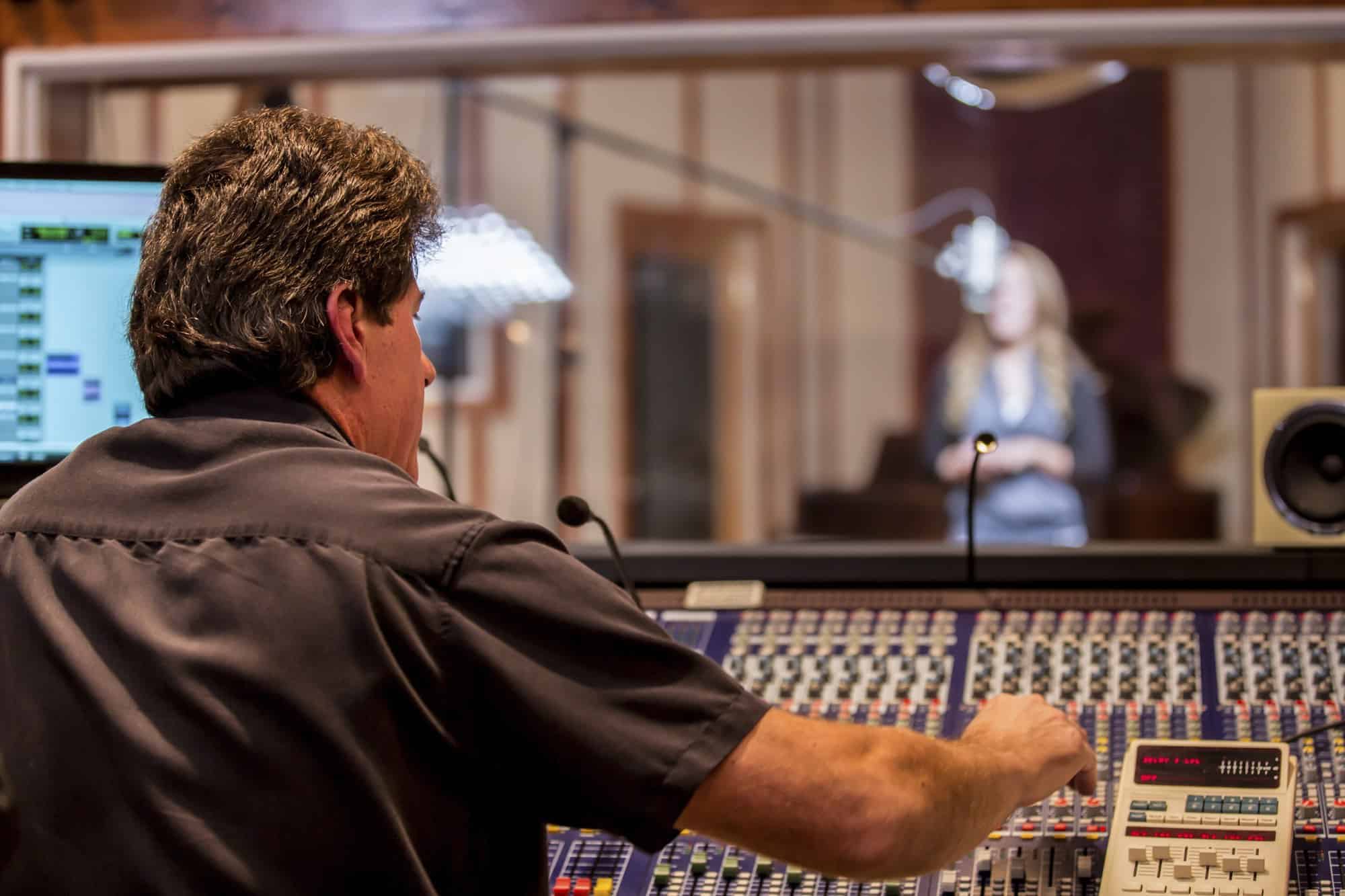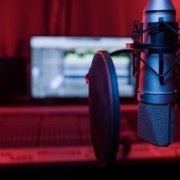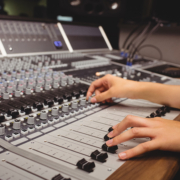Audio Production | The Roles, Steps and Process
Audio production is the art and science of sound recording, editing, and mixing. It can consist of many different projects like films, music, video games, TV advertisements, corporate videos, podcasts, and more. The main formats that are used for these productions are digital recordings.
There are many different types of projects in audio production: music, short films, TV advertisements, corporate videos, and podcasts.
Audio Recording is the process of capturing audio signals with a microphone, while post-production involves altering and enhancing audio signals. The process starts with capturing the best possible sound to be included in the final product. The next step is editing and mixing sounds to create a cohesive product. Finally, the finished product must be mastered by listening for any inconsistencies in volume level or quality before releasing it to the public.
Production Steps
- Project Direction: Firstly, audio engineers and artists collaborate with their clients to determine what the project’s needs are.
- Preproduction: A storyboard or outline is created, which is a plan for all of the sounds that will be recorded to create a sense of how the final audio should sound.
- Recording and Production: Next is to record sounds such as music, foley, dialogue, or narration.
- Editing and Cleanup: After that comes editing – This stage involves tweaking levels of various sounds, removing unwanted noise from recordings, and converting analog signals into digital recordings.
- Mixing and Post-production: The mixing phase sometimes follows the editing phase – it mixes all recorded tracks together to produce one stereo or surround soundtrack(s) for distribution or broadcast.
The audio production process can be broken down into three different categories:
Pre-production is all about planning what will happen during the recording session (i.e., choosing the location, assembling the necessary equipment) and preparing any necessary materials (i.e., scripts, storyboards).
Production is where all of the action happens; it’s when sound engineers, musicians, artists, and voice actors get to work on crafting a finished project for listeners to enjoy.
Audio post-production is the final step in which editors slice and dice raw audio files to make them sound perfect or add finishing touches like music or sound effects.”
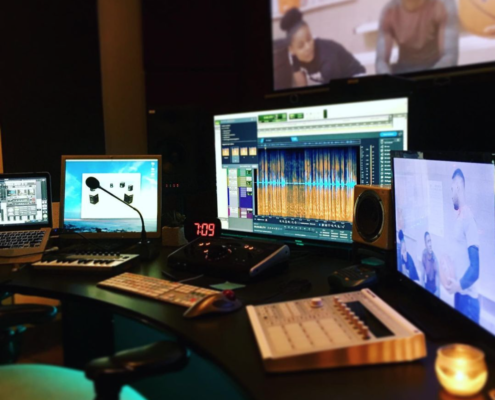
Photo: Audio post-production studio for film, video and surround sound.
The first step of producing audio is deciding on the type of project it will be. There are mainly two types of projects: one that will be broadcasted and one that will not. For example, broadcast on radio, TV, or the internet.
A broadcasted project can be recorded in many different formats like analog recordings (a recording done with magnetic recording tape) or digital recordings the most common (a recording done with hard drives).
To produce audio, at least two people are required: a producer and an engineer. The producer oversees the creative process and arranges financial matters.
Sometimes the artist is the producer depending on the budget and situation. They also track which sections of a song need to be mixed and which sections require mastering. The engineer handles the technical side of things – they operate all machinery on-site during production, mix tracks, maintain levels on your mix, etc.
The types of projects that involve audio production include:
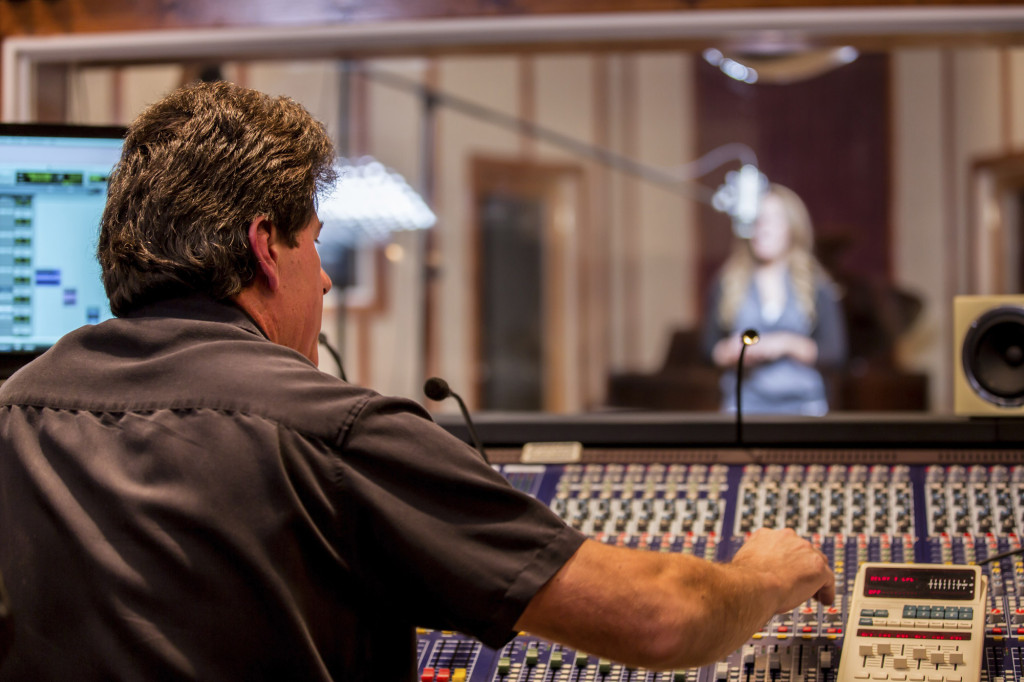
Photo: An audio engineer at the recording console recording a singer for audio production.
- Album production is producing songs to release in the form of digital download or physical media such as CD or DVD.
- Podcasts are episodic series such as interviews that a user can download to a personal device for easy listening.
- Radio recordings are prerecorded segments that the audio engineer edits and prepares for broadcast.
- Audio Advertisements are the most effective form of media advertising.
- Audiobooks (or a talking book) are recordings of a book or other work being read out loud. It can be downloaded to listen to.
- Recording for video games can consist of voiceover, foley recording, and sound design.
- Film mixing is normally referred to as the re-recording mixer. This audio engineer mixes recorded dialogue, sound effects, and music to create the final version of a feature film, television program, or television advertisement.
- Field Recording is normally referred to as the sound mixer, which is responsible for recording and balancing the audio effects on set for a film or video shoot.
What top audio software is used for audio production?
- Avid Pro Tools is a digital audio workstation developed and released by Avid Technology for Microsoft Windows and macOS.
- Apple GarageBand is a line of digital audio workstations for macOS, iPad, and iOS devices that allows users to create music or podcasts.
- Apple Logic Pro X turns your Mac into a professional recording studio able to handle even the most demanding projects.
- FL Studio is a digital audio workstation developed by the Belgian company Image-Line.
- Reaper is a digital audio workstation and MIDI sequencer software created by Cockos.
- Ableton Live is a digital audio workstation for macOS and Windows developed by Berlin-based Ableton.
- Cubase is a digital audio workstation developed by Steinberg for music and MIDI recording, arranging, and editing.
Types of Audio Projects
- Podcasts
- Music albums
- Interviews with experts for videos and blog posts
Formats of Media
MP3 files are common for music albums and streaming such as iTunes, Amazon Music, Youtube, Pandora, Spotify, and more.
Audio formats include:
mp3s and wav files, which can be used on any device; iPod, computer, CDs; or cassettes.
Careers and Opportunities in the audio Production Field
- A songwriter is a musician who professionally composes musical compositions and writes lyrics for songs.
- The music producer is a recording project’s creative and technical leader, commanding studio time and coaching artists
- An audio engineer helps to produce a recording or a live performance, balancing and adjusting sound sources using equalization, dynamics processing
- Mixing engineers are responsible for combining (“mixing”) different sonic elements of an auditory piece into a complete rendition.
- Mastering engineers are skilled in the practice of taking audio that has been previously mixed in either the analog or digital domain and preparing it for use in distribution
- Sound designers are responsible for creating sound effects, atmospheres, sonic textures, and film ambiances that will create naturalistic and abstract worlds.
- Post-production engineers have a solid track record working in the technical and workflow environment of a post-production facility.
- A sound supervisor is an audio professional who works in theater, television, or movie production.

